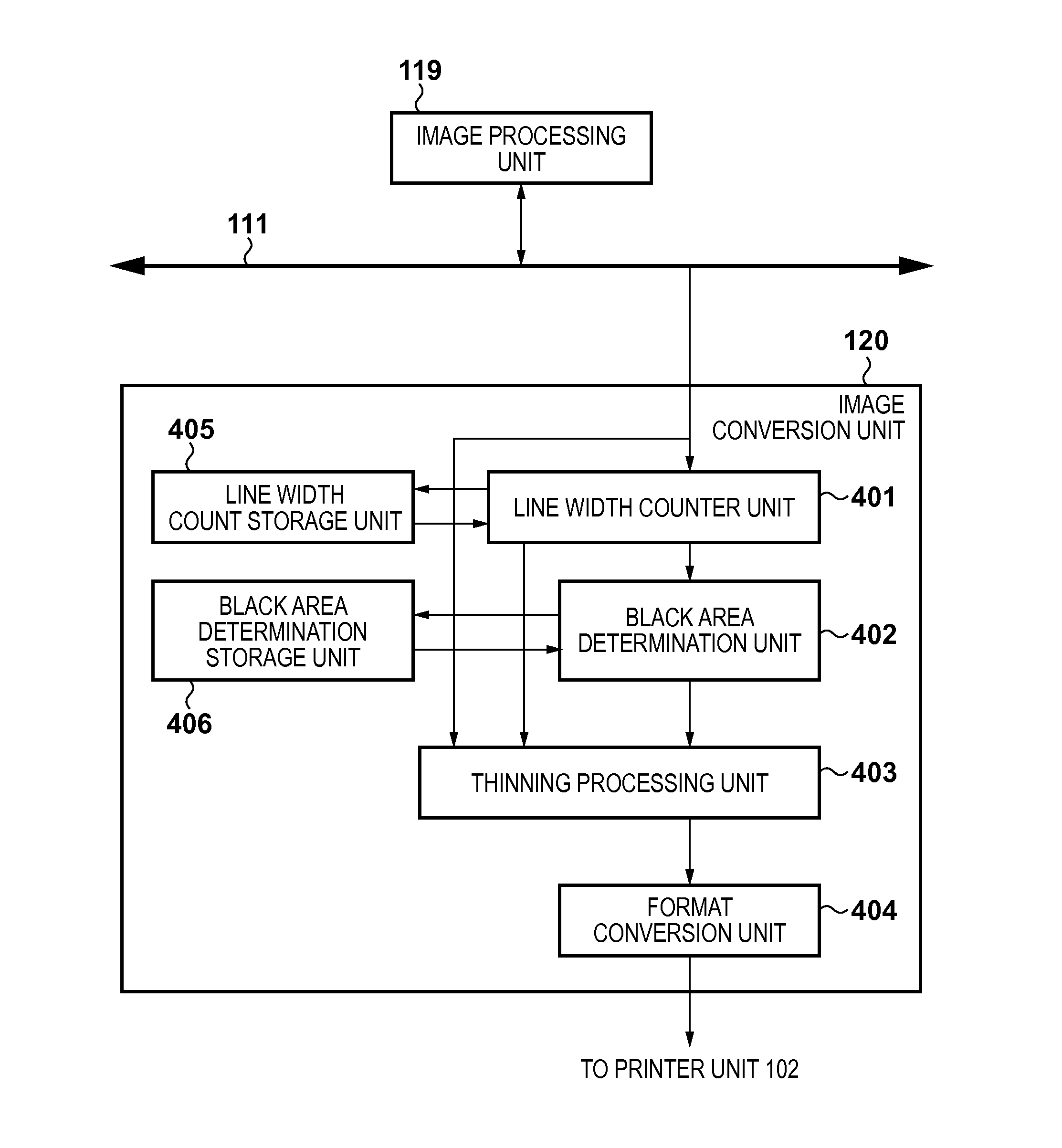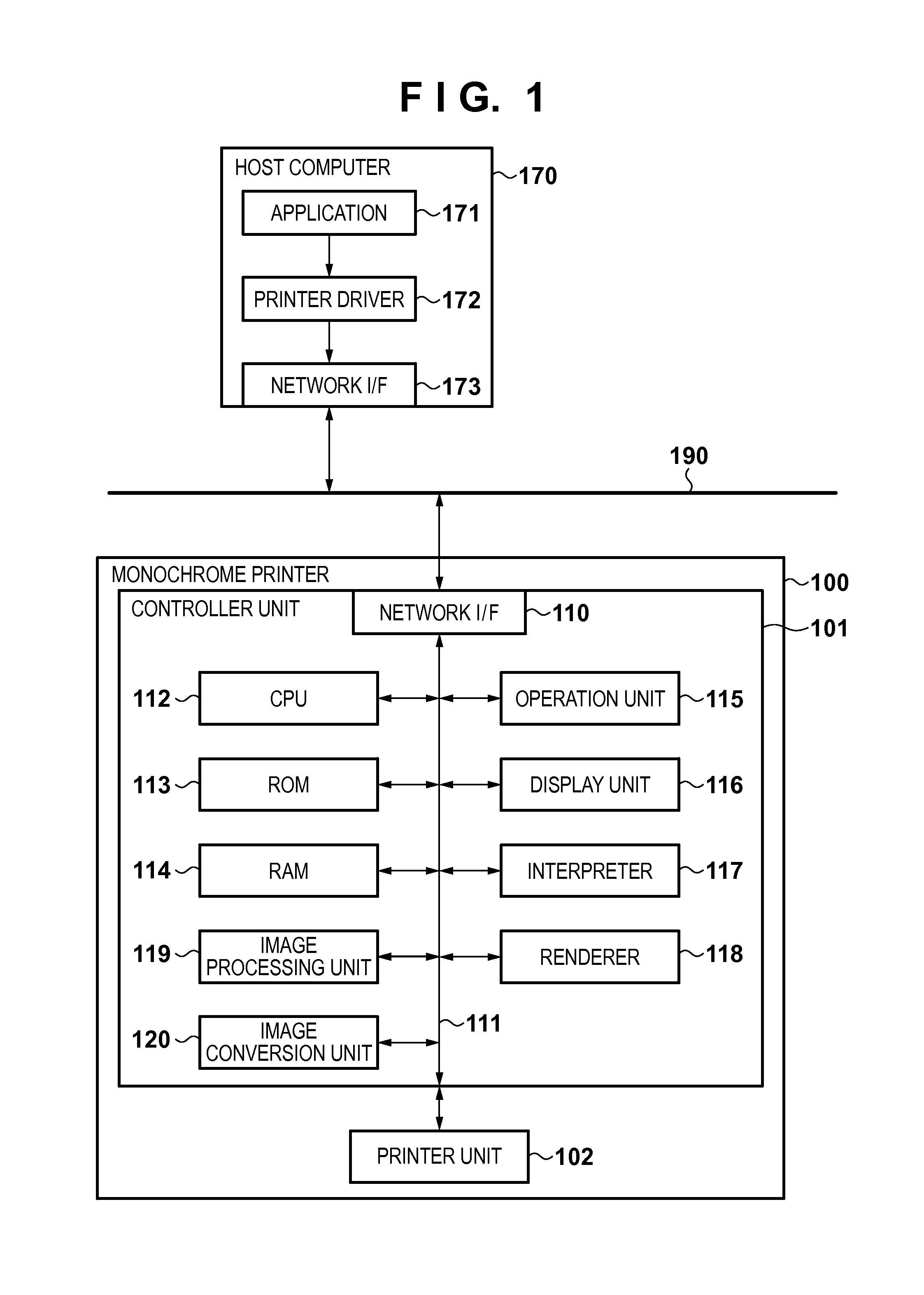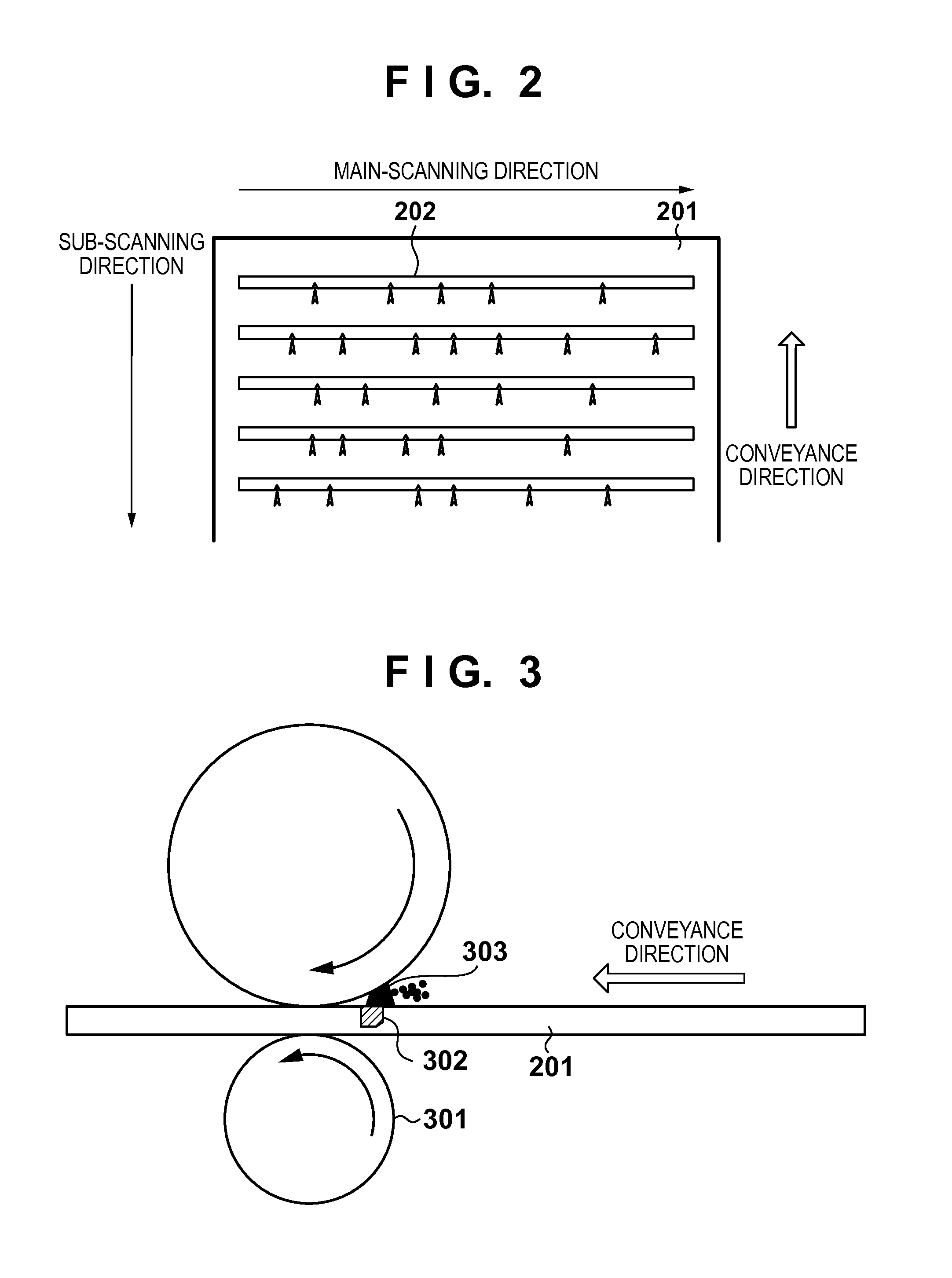Image processing apparatus, method of controlling the same, and storage medium
a technology of image processing and storage media, which is applied in the field of image processing apparatus, a method of controlling the same, and a storage medium, and can solve the problems of increasing the size of the electric circuit, increasing the cost and electric power consumption, and affecting performan
- Summary
- Abstract
- Description
- Claims
- Application Information
AI Technical Summary
Benefits of technology
Problems solved by technology
Method used
Image
Examples
second embodiment
[0080]In the second embodiment, explanation will be given for a case where a thinning processing method different from that used in the previously described first embodiment is used.
[0081]In the previously described first embodiment, the line widths are determined from the line counter values obtained from the line width counter unit 401, and thinning processing is performed by the thinning processing unit 403 in accordance with the line widths. In contrast to this, in the second embodiment, processing is performed for changing the sub-scanning direction upstream area line counter maximum value by changing the size of the reference window in accordance with apparatus characteristics.
[0082]The thinning characteristic is that the line width at which the tailing blur occurs differs according to the image forming speed of the image forming apparatus. Accordingly, when the size of the reference window changes, it is necessary to change the consecutive line number counter value. In other ...
third embodiment
[0084]In the previously described first embodiment, the line width is determined from the line counter values obtained from the line width counter unit 401, and thinning processing is performed by the thinning processing unit 403 in accordance with the line width. In the third embodiment, processing for changing the upstream area line counter maximum value is performed by changing the reference window size in accordance with apparatus characteristics. The thinning characteristic is that the line width at which the tailing blur occurs differs in accordance with a resolution of the image forming apparatus. However, because the physical line width at which the tailing blur occurs does not change, for example, in a case where image data having a resolution of 1200 dpi is processed, the line width is twice what it is when the resolution is 600 dpi. For example, in a case where the resolution is 600 dpi, the window size is made to be 16 lines, and when it is 1200 dpi, the window size is m...
fourth embodiment
[0086]In the previously described first embodiment, the line width is determined from a line counter value obtained from the line width counter unit 401, and thinning processing is performed by the thinning processing unit 403 in accordance with the line width. In contrast to this, in the fourth embodiment, processing is performed for changing the sub-scanning direction upstream area line counter maximum value by changing the size of the reference window in accordance with apparatus characteristics. The thinning characteristic is that the line width at which the tailing blur occurs differs in accordance with a humidity level of the surrounding environment of the image forming apparatus. Accordingly, it is determined how easily the tailing blur can occur by estimating an amount of moisture contained from a humidity level and temperature, and, for example, use a larger line width in a case of high temperature and humidity (for example 16 lines) and use a smaller line width in a case o...
PUM
 Login to View More
Login to View More Abstract
Description
Claims
Application Information
 Login to View More
Login to View More - R&D
- Intellectual Property
- Life Sciences
- Materials
- Tech Scout
- Unparalleled Data Quality
- Higher Quality Content
- 60% Fewer Hallucinations
Browse by: Latest US Patents, China's latest patents, Technical Efficacy Thesaurus, Application Domain, Technology Topic, Popular Technical Reports.
© 2025 PatSnap. All rights reserved.Legal|Privacy policy|Modern Slavery Act Transparency Statement|Sitemap|About US| Contact US: help@patsnap.com



